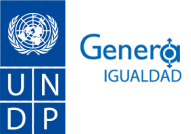The human development crisis unleashed by the COVID-19 pandemic is putting the fight for gender equality at risk. The immediate effects of COVID-19 are already showing in different dimensions, from health and education to the burden of unpaid care work and gender-based violence.
While the COVID-19 crisis affects everyone, women and girls face specific additional risks due to deeply entrenched inequalities, social norms, and unequal power relations. Understanding the gender-differentiated impacts of the COVID-19 crisis through sex-disaggregated data is fundamental to designing policies that reduce vulnerabilities and strengthen women’s agency. This is not just about rectifying long-standing inequalities but also about building a more just and resilient world.
The Human Development Report Office in collaboration with the Gender Team at UNDP, presents new Dashboards on the Gender Inequality and the COVID-19 crisis with a Human Development perspective. They show how the pandemic puts women’s human development at risk and affects their crisis preparedness. It also highlights women’s ability to tackle the effects of the pandemic and associated economic crisis for themselves.

The first dashboard (Figure 1) depicts areas at risk–in health, including reproductive health, and finances. Women face multiple challenges in these areas. Women are at the frontlines of the COVID-19 response. They make up more than 85 percent of nurses, and women make up almost half of medical doctors for all groups except countries with low human development. But they are also overrepresented in many sectors most heavily impacted by national lockdowns, such as accommodation and food services, the garment industry, and retail. On top of this, women´s disproportionate representation in informal employment makes them less likely to have protection against dismissals, paid sick leave, and other worker rights if they lose their jobs.
Women’s health can also be harmed by taking resources away from reproductive health. The use of contraceptives was already lower than 55 percent in medium and low human development countries. In this context, the crisis is likely to increase maternal mortality and adolescent pregnancies. In low and middle-income countries, 47 million women are expected to lose regular access to modern contraceptives due to the COVID-19 pandemic if lockdowns shut family planning clinics.

The second dashboard (Figure 2) presents indicators of women’s safety at home and their ability to deal with the crisis. Lockdowns around the world mean many women are isolated in a space that is supposed to be safe. However this is often not the case. At the global level 30 percent of women have experienced intimate partner violence. Harmful practices such as child marriage remain high in countries with lower levels of human development. In these countries 39 percent of girls are married before their 18th birthday. To make things worse, the increased stress from the crisis combined with preexisting social norms is also seems to be contributing to an increase in gender-based violence.
Women already spend on average over three more hours a day on unpaid care and domestic work than men, so the quarantine will likely increase the time they spend caring for children, the sick, and the elderly, as well as doing household tasks.
Preparedness to face the effects of the pandemic is also reflected in women´s chances to make their own decisions about their lives and bodies. Such agency is critical. But the policy responses adopted by many countries have left millions of girls out of school and their chances of continuing their education remotely often depend on whether they have reliable internet.
Other dimensions that can be affected by the COVID-19 crisis include women’s decision-making power in economic and political spheres, leading to widening gender gaps in accessing basic services, controlling assets, and managing resources. Women were already poorly represented in positions of power in economic and political spheres. The lockdown puts at risk the gains at the household level, hinders women participating in decision-making and increases the risk of job losses.
Supporting gender analysis and sex-disaggregated data should be an integral part of a strong COVID-19 response. However, despite the huge efforts made to monitor the spread and impact of the virus, significant gaps persist. We urgently need reporting data disaggregated by sex, age, residence, race, ethnicity and other key characteristics. The strongest policy responses that enable girls and women to better weather and recover from future crises will require a solid foundation in data.
By
Carolina Rivera
Research Analyst, Human Development Report Office, UNDP
Yu-Chieh Hsu
Statistics Analyst, Human Development Report Office, UNDP
Fernanda Pavez Esbry
Research Consultant, Human Development Report Office, UNDP
Esuna Dugarova
Gender Specialist, Gender Team, UNDP
Fuente:https://www.undp.org/content/undp/en/home/blog/2020/what-does-coronavirus-mean-for-women.html

